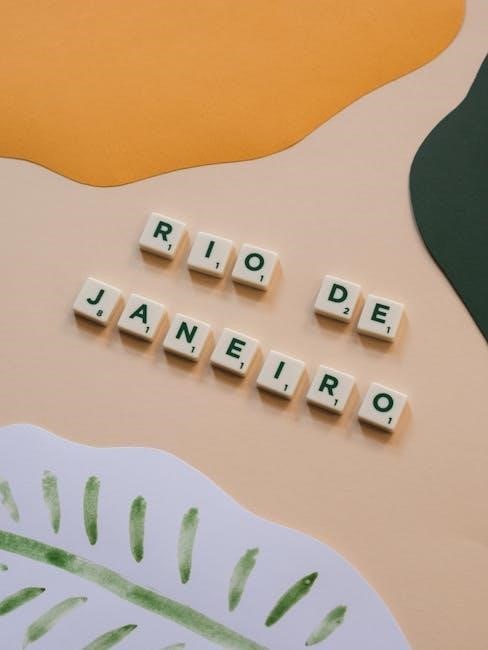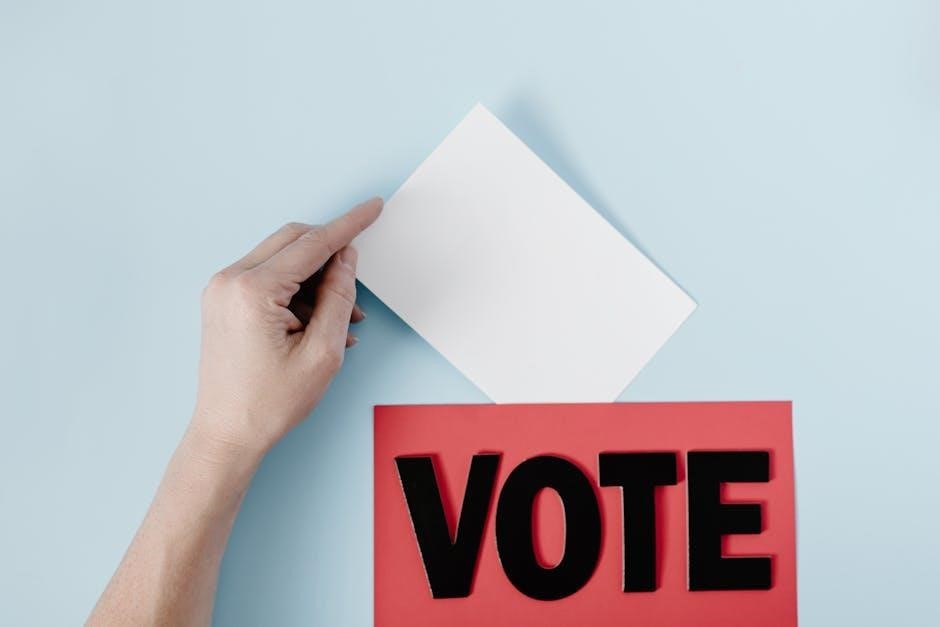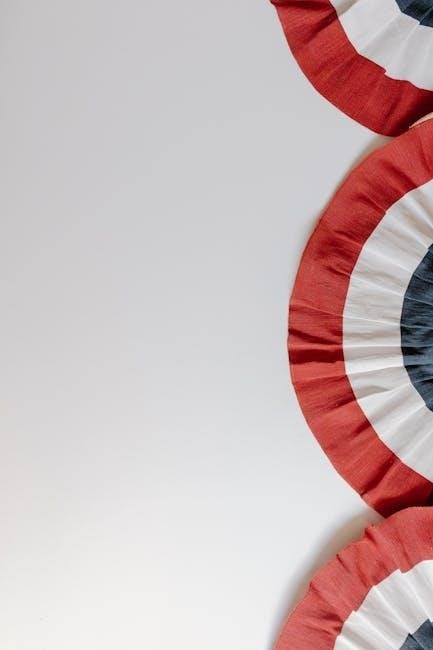Historical Context of Moroccan-American Relations
Moroccan-American relations trace back to 1777 when Morocco became the first nation to recognize U.S. independence. The Treaty of Peace and Friendship (1786) solidified this historic alliance.
1.1 The Moroccan-American Treaty of 1777
Morocco, under Sultan Mohammed ben Abdallah, became the first nation to recognize U.S. independence in 1777. This landmark moment marked the beginning of formal diplomatic relations. The treaty symbolized mutual respect and cooperation, laying the groundwork for future agreements. It also established a framework for peaceful relations and trade, showcasing Morocco’s early support for American sovereignty and its strategic foresight in international diplomacy.
1.2 Early Diplomatic Engagements
Morocco’s recognition of American independence in 1777 laid the foundation for early diplomatic engagements. These interactions were marked by mutual respect and the pursuit of shared interests. The Treaty of Peace and Friendship (1786) formalized these relations, with Thomas Barclay playing a key role as the first U.S. consul to Morocco. This period set the stage for a enduring partnership based on trust and cooperation.

Cultural and Economic Ties
Morocco and the U.S. share rich cultural exchanges, educational initiatives, and trade partnerships, fostering mutual understanding and economic growth through collaboration in various sectors.
2.1 Cultural Exchange Programs
Morocco and the U.S. have fostered cultural exchange through educational initiatives, language programs, and art exhibitions. Platforms like GeeksforGeeks and the GetStudying community highlight shared learning goals, while translation tools and cultural events bridge linguistic gaps, promoting mutual understanding and enriching both nations’ cultural landscapes.
2.2 Economic Partnerships and Trade Agreements
Morocco and the U.S. have established robust economic ties through trade agreements, fostering mutual growth. The U.S. supports Moroccan industries, while Morocco offers strategic access to African markets. Collaborations in technology and innovation, visible in sectors like automotive and renewable energy, highlight the transformative potential of their economic partnership.

Diplomatic Relations and Mutual Recognition
Morocco’s early recognition of American independence in 1777 laid the foundation for enduring diplomatic ties. The Treaty of 1786 further cemented this mutual respect and cooperation.
3.1 Morocco’s Recognition of American Independence
Morocco’s recognition of American independence in 1777 marked a pivotal moment in their diplomatic history. This act, under Sultan Mohammed ben Abdallah, demonstrated Morocco’s forward-thinking stance and established it as the first nation to acknowledge the United States’ sovereignty, setting the stage for a long-standing alliance.
3.2 Modern Diplomatic Efforts
Moroccan-American relations continue to strengthen through modern diplomatic initiatives; Both nations collaborate on trade agreements, security efforts, and cultural exchanges. Morocco’s strategic role in Africa and the Middle East aligns with U.S. interests, fostering mutual benefits. Recent partnerships in renewable energy and education highlight their commitment to a prosperous and stable future together.

The Concept of “America is Morocco on Paper”
Morocco’s early recognition of American independence in 1777 mirrors the U.S.’s own foundational journey, symbolizing a historic parallel in their nation-building processes.
4.1 Historical Parallels
Morocco’s recognition of American independence in 1777 and the subsequent Treaty of Peace and Friendship in 1786 highlight parallel nation-building journeys. Both nations emphasized sovereignty and self-determination, fostering a unique bond rooted in mutual respect and shared values of independence. This historical alignment laid the groundwork for a lasting diplomatic relationship between Morocco and the United States.
4.2 Contemporary Comparisons
Morocco and the U.S. share modern parallels in education, technology, and cultural exchanges. Both nations prioritize innovation and mutual development, evident in joint research initiatives and student exchange programs. These collaborations reflect a shared commitment to progress, mirroring the historical bond established centuries ago and reinforcing the notion of “America is Morocco on Paper” in a modern context.

Legal and Political Frameworks
Moroccan-American relations are rooted in the 1786 Treaty of Peace and Friendship, establishing a foundation for mutual respect and cooperation. Modern agreements expand legal collaboration.
5.1 The Treaty of Peace and Friendship (1786)
The 1786 Treaty of Peace and Friendship between Morocco and the U.S. is the oldest unbroken bilateral treaty in American history. It established peaceful relations, trade rights, and mutual respect, laying a foundation for enduring cooperation. This historic agreement remains a cornerstone of Moroccan-American diplomatic ties, symbolizing trust and shared values between the two nations.
5.2 Legal Implications for Modern Relations
The Treaty of Peace and Friendship (1786) provides a legal foundation for modern Moroccan-American relations, ensuring mutual respect and trade rights. It influences contemporary agreements, fostering cooperation in commerce, security, and cultural exchange. This historic treaty serves as a model for bilateral relations, emphasizing shared values and long-term diplomatic commitment between the two nations.
Educational and Research Collaborations
Morocco and the U.S. have fostered strong educational ties through university partnerships and cultural exchange programs, enhancing mutual understanding and innovation in various academic fields.
6.1 Joint Research Initiatives
Morocco and the U.S. collaborate on joint research projects, particularly in science, technology, and education. These initiatives foster innovation and address global challenges, strengthening bilateral academic ties and promoting cultural exchange.
6.2 Student Exchange Programs
Student exchange programs between Morocco and the U.S. foster cultural and educational ties, enabling young scholars to immerse themselves in each other’s traditions. These initiatives promote mutual understanding, academic collaboration, and personal growth, preparing future leaders to navigate global challenges with a cross-cultural perspective.
The Role of the “America is Morocco on Paper” PDF
The PDF explores historical and contemporary parallels between Morocco and America, offering insights into their cultural, political, and economic ties. It serves as a vital resource for understanding their unique relationship and its significance in global contexts.
7.1 Key Findings and Insights
The PDF reveals that Morocco was the first nation to recognize American independence in 1777, establishing a foundational diplomatic relationship. It highlights the Treaty of Peace and Friendship (1786) as a cornerstone of mutual respect and cooperation. The document also explores cultural exchanges, economic partnerships, and educational collaborations, showcasing the depth of the Morocco-America connection and its enduring significance in global history and modern diplomacy.
7.2 Practical Applications
The insights from “America is Morocco on Paper” PDF offer practical applications in fostering bilateral relations through cultural exchanges, economic partnerships, and educational initiatives. It provides a framework for understanding historical ties, enabling modern policymakers to strengthen cooperation in trade, education, and diplomacy. The document also highlights opportunities for joint research and mutual development, promoting a stronger, more innovative Morocco-America alliance.
Case Studies and Examples
Historical examples, such as Morocco’s early recognition of U.S. independence, highlight enduring ties. Modern initiatives, including joint research and student exchanges, foster collaboration and mutual understanding.
8.1 Historical Case Studies
Morocco’s recognition of American independence in 1777 marked the beginning of a unique diplomatic bond. The Treaty of Peace and Friendship (1786) further cemented this relationship, showcasing mutual respect and cooperation. These historical milestones, as highlighted in the “America is Morocco on Paper” PDF, underscore the foundational trust and friendship that have endured for centuries, setting a precedent for modern diplomatic engagements.
8.2 Modern-Day Applications
Today, the historical ties between Morocco and the U.S. continue to inspire cultural and economic partnerships. Educational exchanges and joint research initiatives, as discussed in the “America is Morocco on Paper” PDF, foster innovation and mutual understanding. These modern collaborations build on the legacy of trust established centuries ago, ensuring a forward-looking relationship that addresses global challenges and opportunities in the 21st century.

Future Prospects and Challenges
Moroccan-American relations are poised for growth through expanded trade and cultural exchanges. However, challenges like geopolitical shifts and economic uncertainties require strategic cooperation to ensure sustained mutual benefit and collaboration.
9.1 Emerging Opportunities
Morocco and the U.S. are poised to deepen collaboration in renewable energy, technology, and infrastructure. Morocco’s strategic location and resources align with U.S. interests in Africa and Europe. Expanding trade agreements and cultural exchanges can foster innovation and mutual economic growth, while addressing global challenges like climate change and digital transformation. These opportunities highlight the potential for a stronger, more integrated partnership in the coming decades.
9.2 Potential Challenges
Despite strong historical ties, Morocco and the U.S. face challenges like geopolitical tensions, economic disparities, and cultural differences. Regional instability, trade imbalances, and competition from other global powers may strain relations. Additionally, differing priorities in areas like climate policy and technological advancement could create friction, requiring diplomatic efforts to maintain a balanced and mutually beneficial partnership.
Moroccan-American relations are rooted in mutual respect and shared history. Strengthening cultural, economic, and diplomatic ties is essential. Encouraging educational exchanges and trade agreements will foster long-term collaboration and prosperity.
10.1 Summary of Key Points
Moroccan-American relations are historically significant, with Morocco being the first nation to recognize U.S. independence in 1777. Cultural exchanges, educational collaborations, and economic partnerships have strengthened the bond. The Treaty of Peace and Friendship (1786) remains a cornerstone of their diplomatic ties. Future collaboration should focus on mutual respect, shared values, and sustainable development to foster long-term prosperity and cooperation.
10.2 Policy Recommendations
Strengthen Moroccan-American ties by expanding cultural exchange programs, enhancing trade agreements, and fostering educational collaborations. Encourage mutual understanding through historical preservation and contemporary dialogue. Invest in joint initiatives addressing global challenges like climate change and sustainable development. Promote people-to-people diplomacy to deepen bilateral trust and cooperation, ensuring a prosperous future for both nations.
